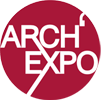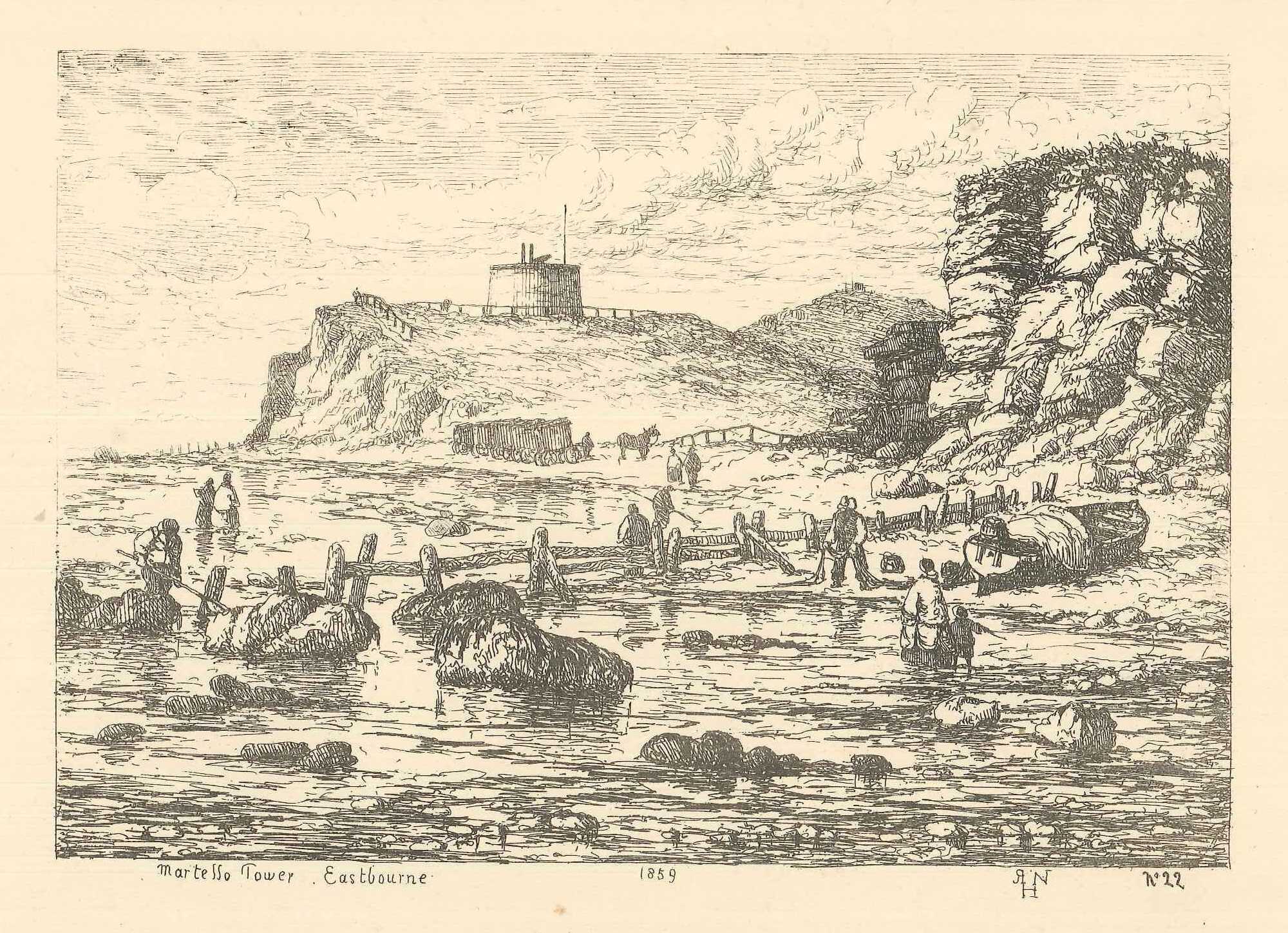A view of Eastbourne showing bathing machines on the beach.
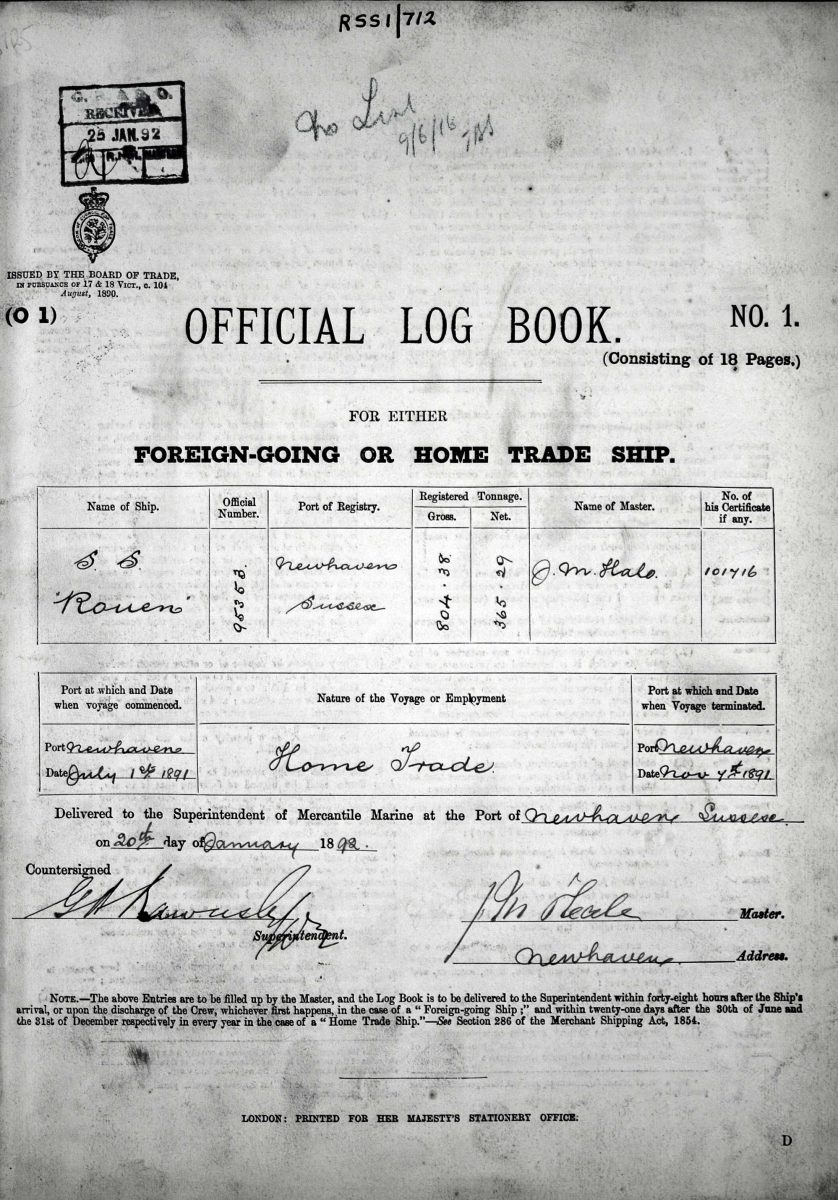
Official log book for the SS Rouen of Newhaven
This book is not the ship’s log proper but a record of certain categories of incident (eg deaths, disturbances on board) which were statutorily required to be reported to the Registrar General of Shipping and Seamen. It includes a list of crew members with a report on their character and ability in seamanship.
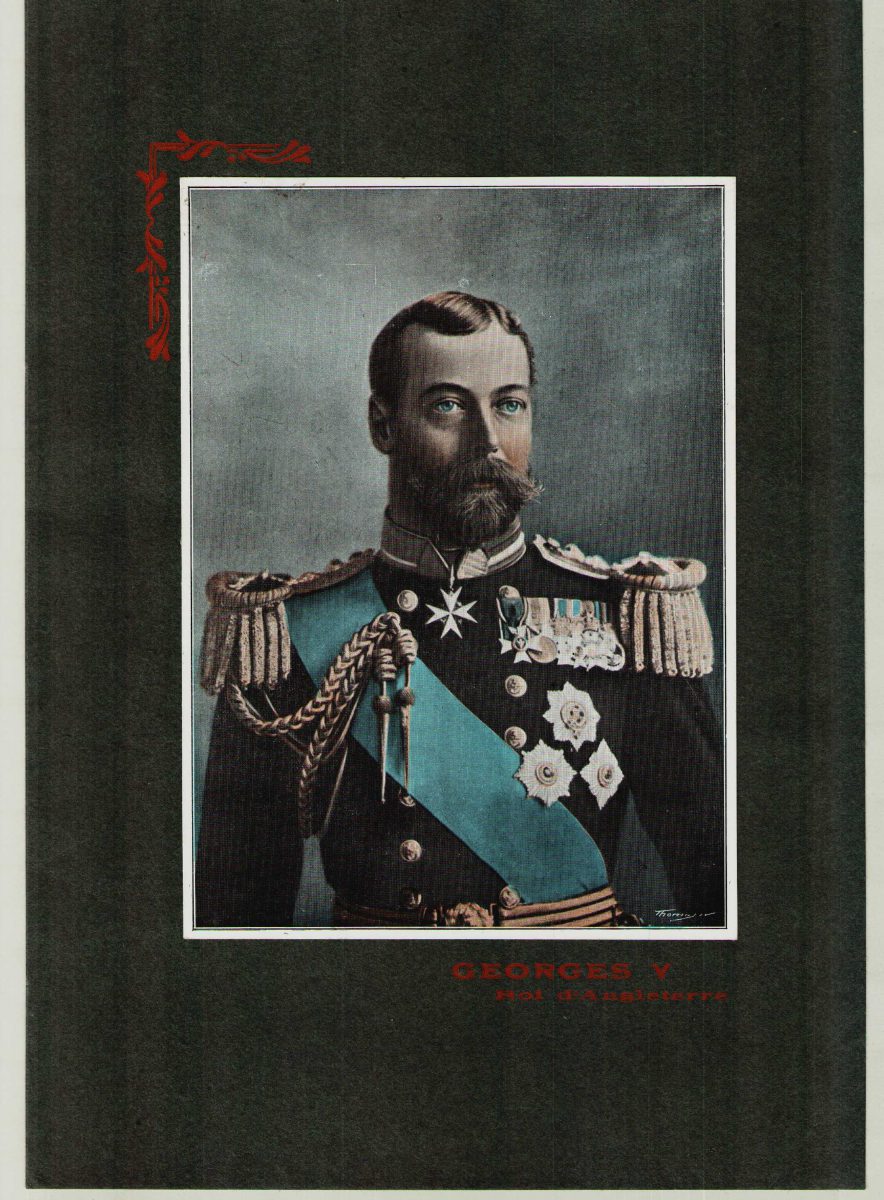
Telegram announcing the visit of King George V
The telegraph, along with carrier pigeons and radio, was a fast and effective means of communication between the Allies and the front line during the war. Messages were always sent in code to prevent the enemy intercepting the information. This message, encrypted using a highly sophisticated cipher, relates to the secret visit made by King George V to British troops in Rouen.
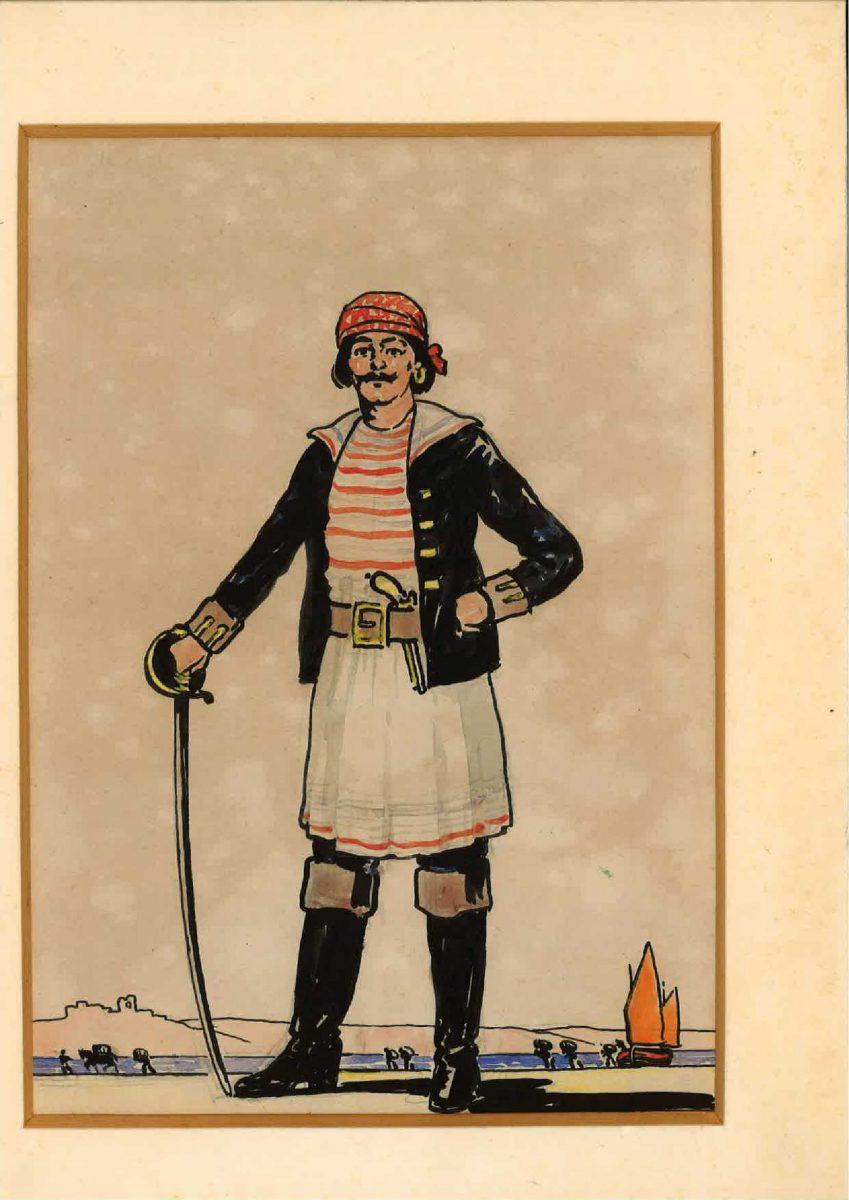
Drawing of a smuggler
Romanticised drawing of a smuggler, with the outline of the shore with Hastings Castle, and a run in progress from a lugger, by E. Leslie Badham (1873-1945), pen and ink.
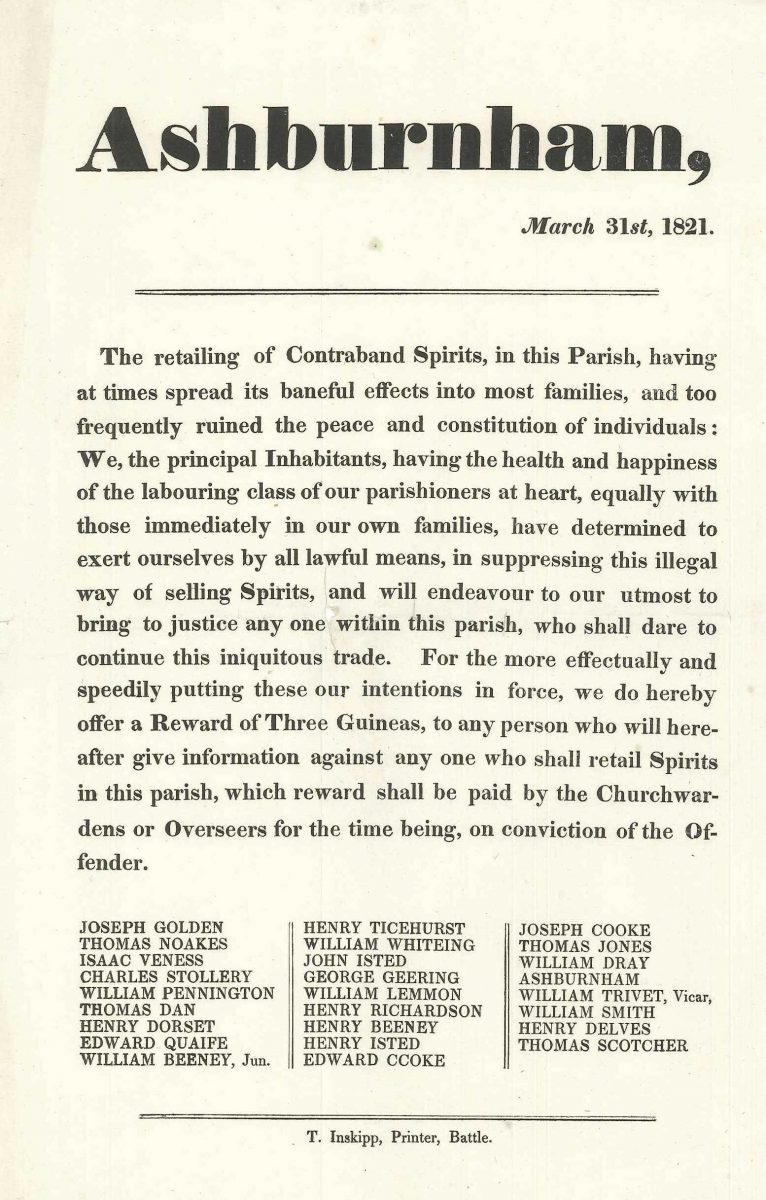
Printed notice about contraband spirits
Printed notice offering reward for information about retailing contraband spirits, which would have included French brandy.
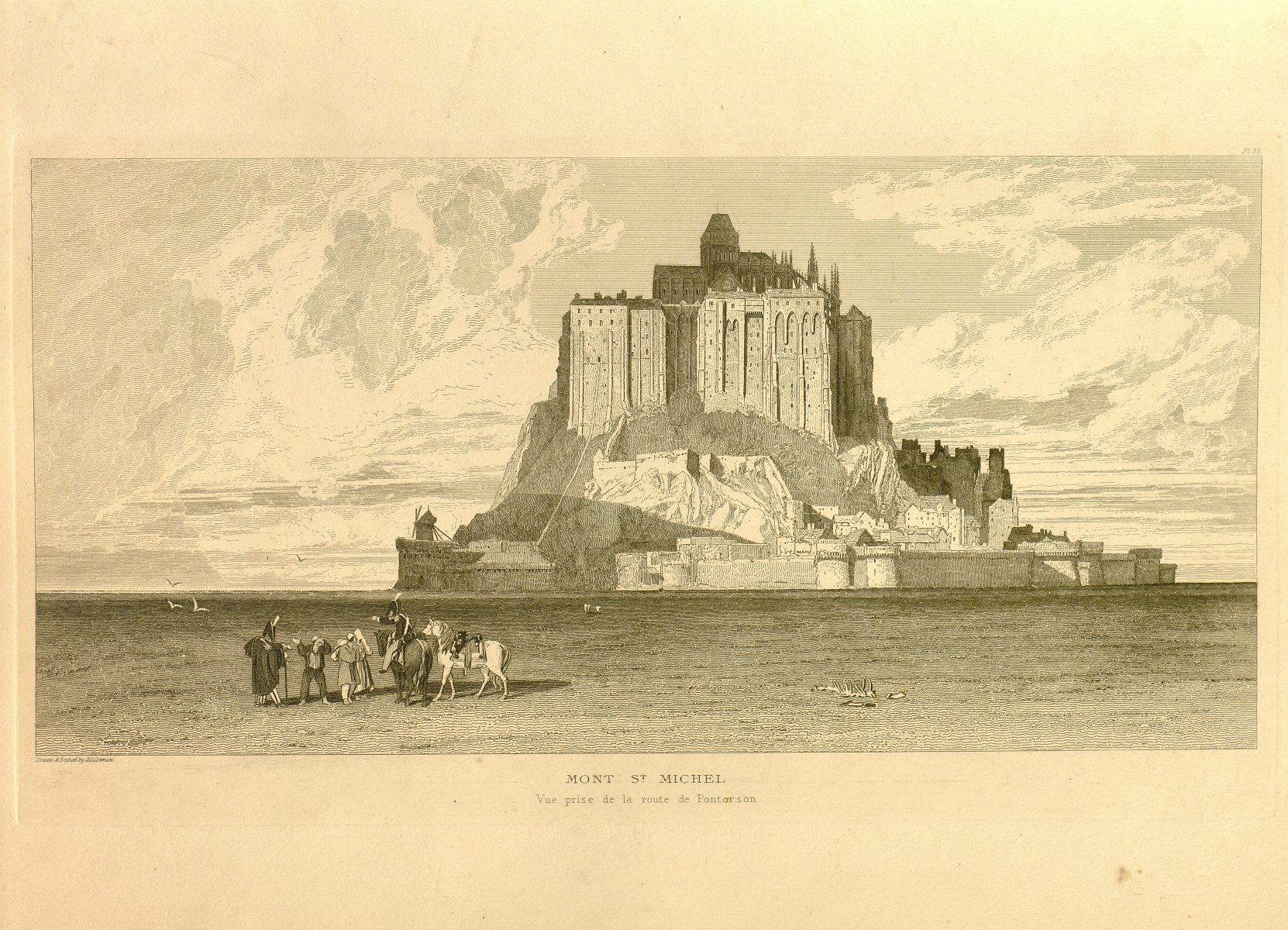
Architectural Antiquities of Normandy by John Sell Cotman – London, J. & A. Cornhill
Many British citizens started to explore their Anglo-Norman roots from the second half of the 18th century onwards. Normandy was a popular destination for artists: painters like Turner, photographers like Tenison, but also engravers who reproduced their creations.
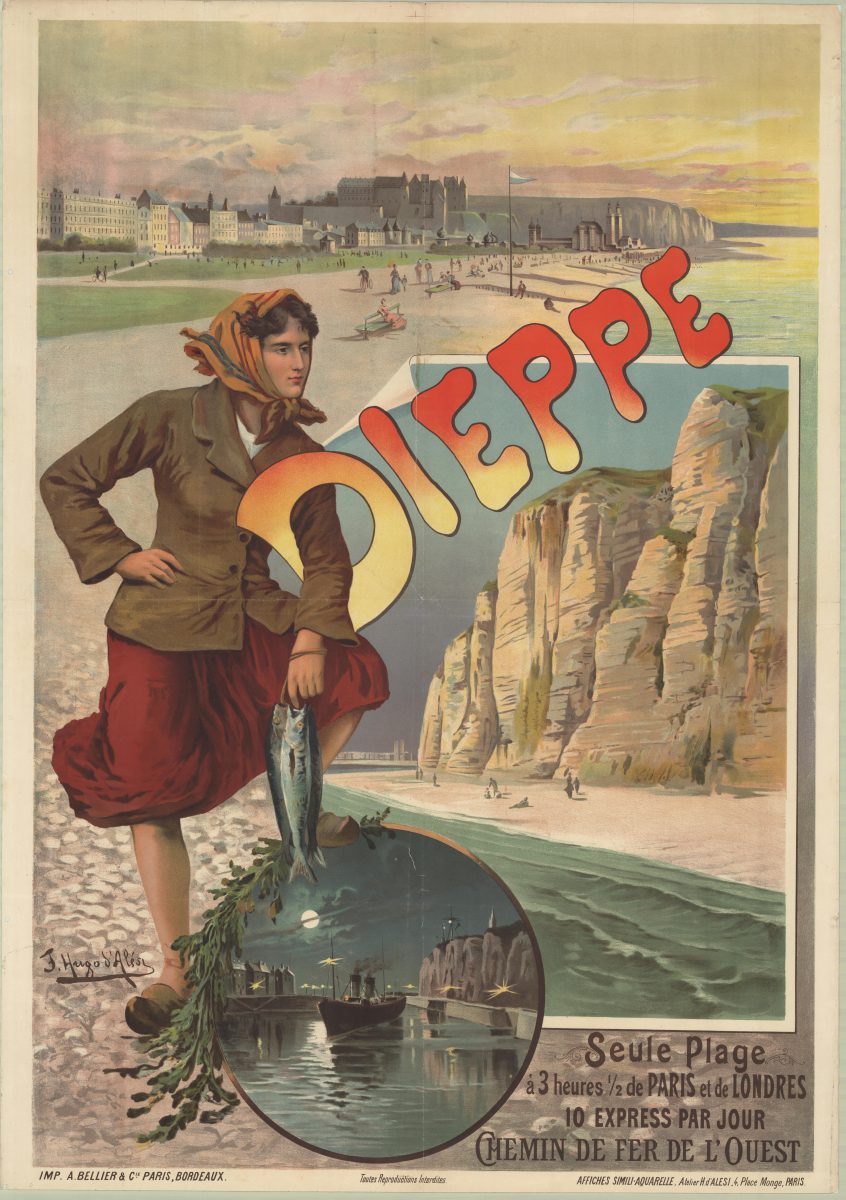
Dieppe, posters issued by the Western Railways
Shortly before 1900, new printing processes gave rise to large advertising poster format. This support, among others, allows railway companies to promote tourist sites served by rail.
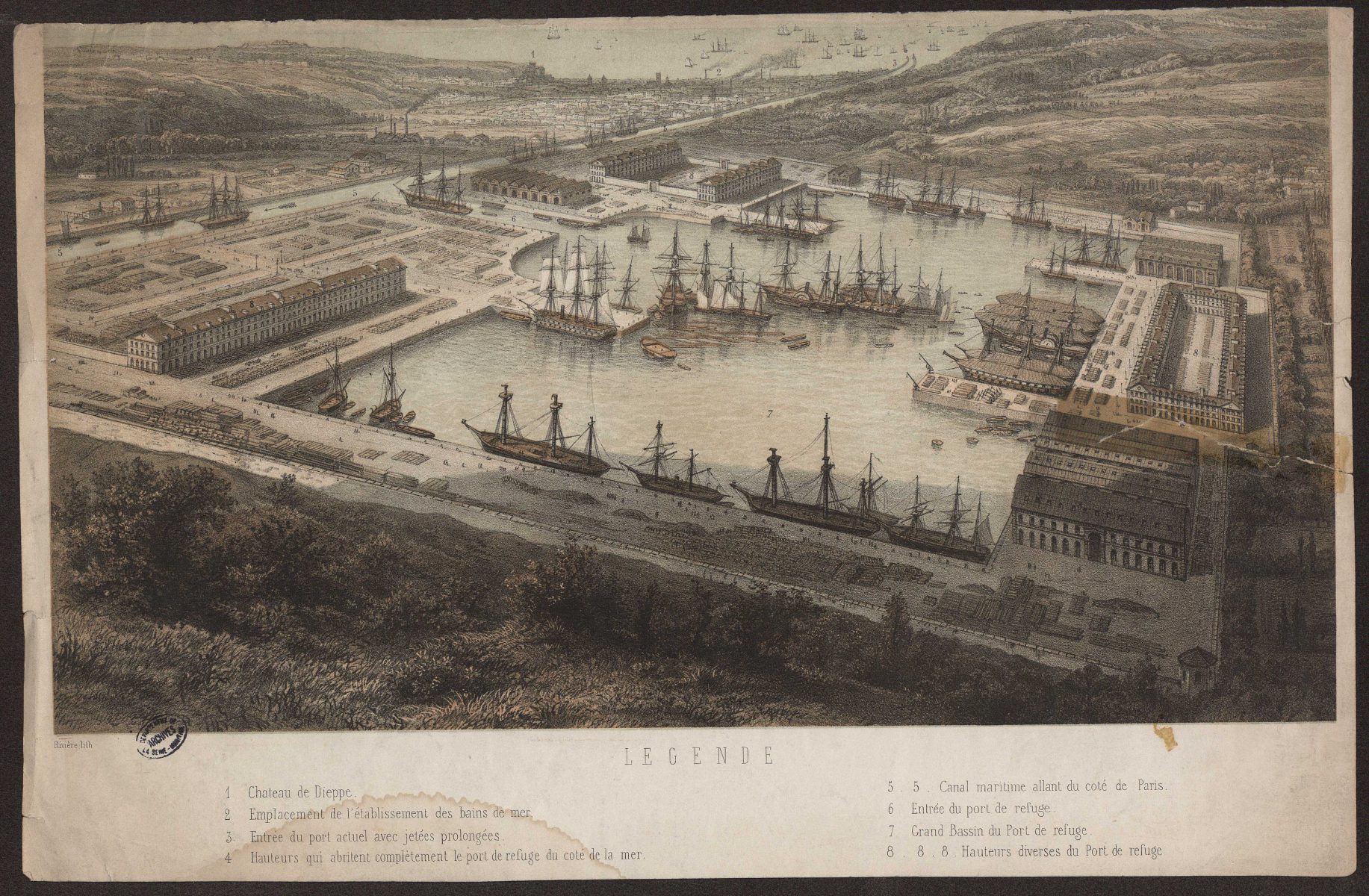
Extension project for the port of Dieppe, with the creation of a port of refuge. Colour lithography by Rivière
This perspective view of Dieppe, designed around 1840, highlights two ambitious infrastructure projects that never emerged: on the foreground, a large basin meant for receiving tall ships, extends to Neuville; to reach it, the ships used a channel “going to Paris”.
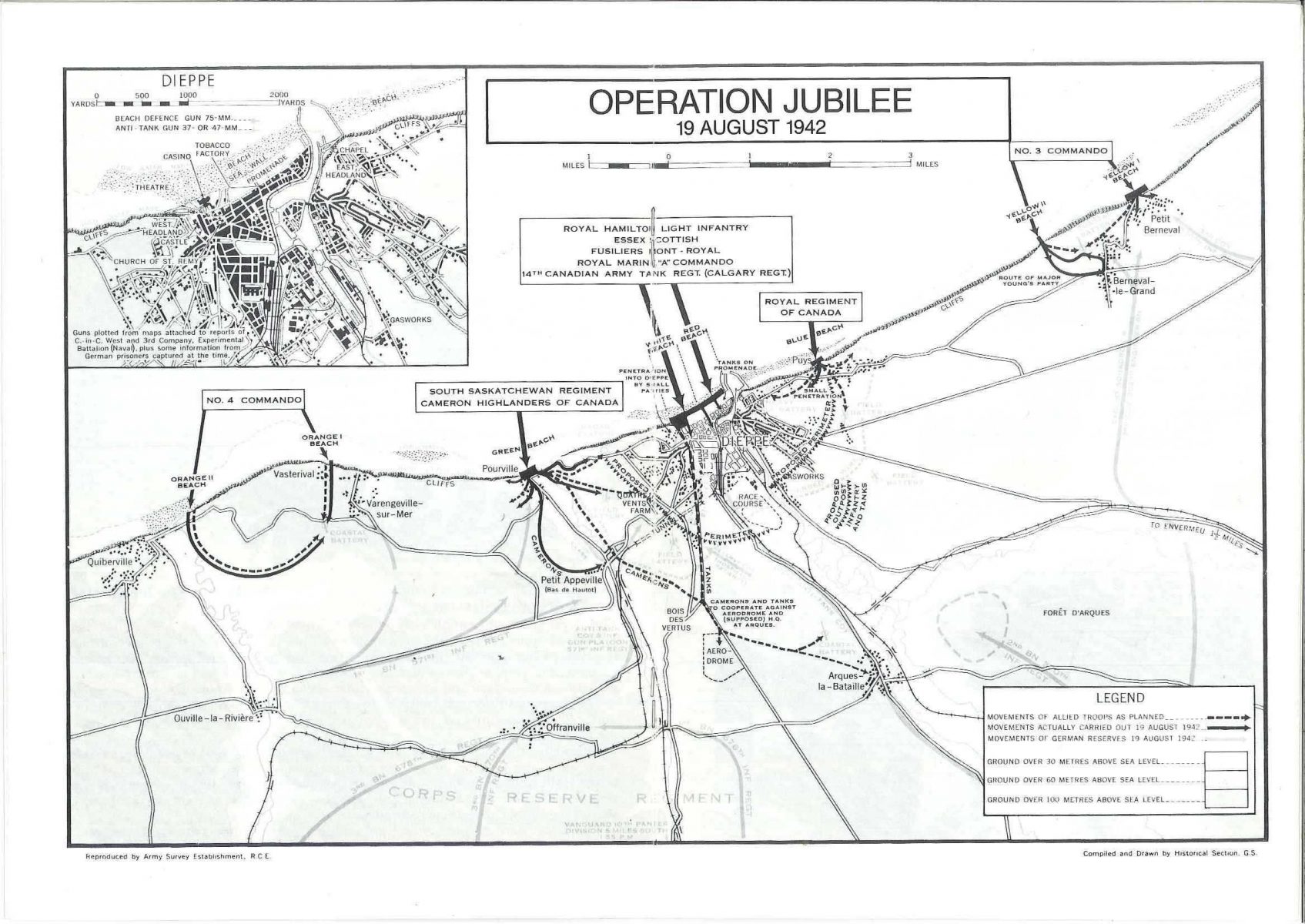
Account of the Dieppe raid (Operation Jubilee) by Roger Rothwell, clerk to Newhaven Town Council, published jointly by Newhaven Town Council and East Sussex County Council to mark the fiftieth anniversary of the event
Clerk to Newhaven Town Council, published jointly by Newhaven Town Council and East Sussex County Council to mark the fiftieth anniversary of the event.
![An illustrated letter from Percy Horton to [Lydia Sargent Smith] describing the physical and emotional state of Harry Horton on his return from war An illustrated letter from Percy Horton to [Lydia Sargent Smith] describing the physical and emotional state of Harry Horton on his return from war](http://www.archexpo.fr/wp-content/uploads/2018/07/v01_ams_6375-1-9_part_of_illustrated_letter_from_percy_horton_1918.jpg)
An illustrated letter from Percy Horton to [Lydia Sargent Smith] describing the physical and emotional state of Harry Horton on his return from war
He describes how
My brother arrived home from the front covered in mud and blood and lice. His clothes were so filthy that mother could do nothing with them and he is now wearing my cast-off khaki!…The poor boy was so tired out that he reeled like a drunken man…War seems to have made him ill and gloomy. He just mopes
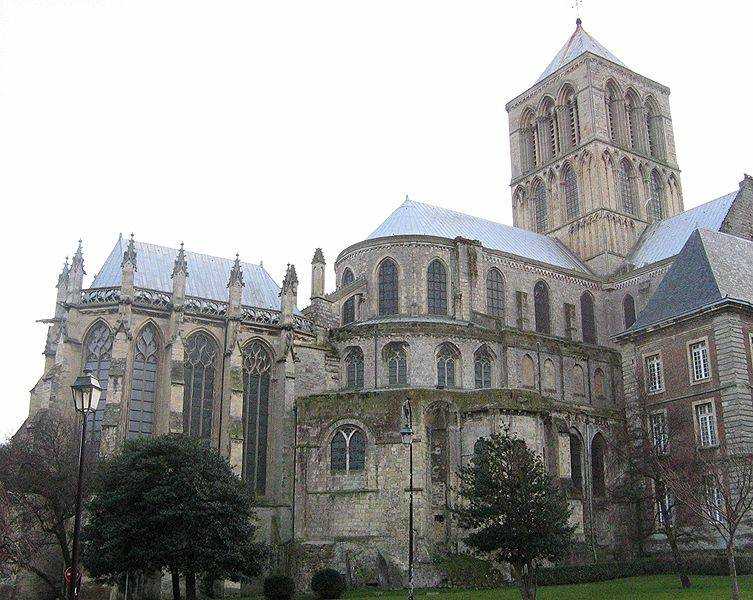
Fécamp Abbey, watercolour by Paul Marny
Fécamp had an important role as early as the reign of William Longsword (927-942), the son of Rollo, thanks to the existence of a ducal residence near the former abbey which had been abandoned at the end of the ninth century before being restored as a collegiate church by Richard I in 990 and then being given abbey status in 1001 by Richard II.
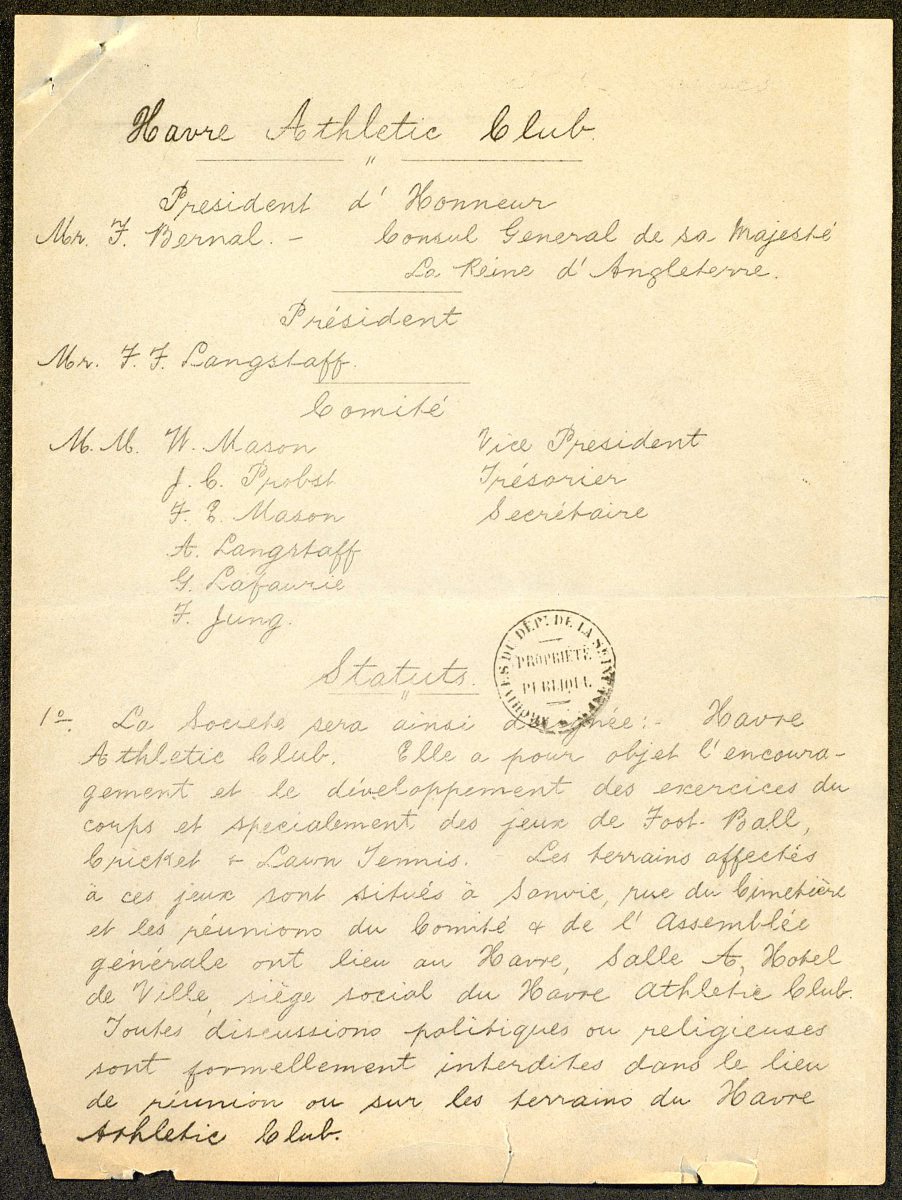
The first football club in France: bye-laws of the Le Havre Athletic Club
The Le Havre Football club was set up in 1872 by English Protestant expatriates working as traders or shop assistants in Le Havre. In 1891 the Le Havre Athletic Club adopted the colours of the English universities where the players had studied: the famous light blue of Cambridge and dark blue of Oxford.
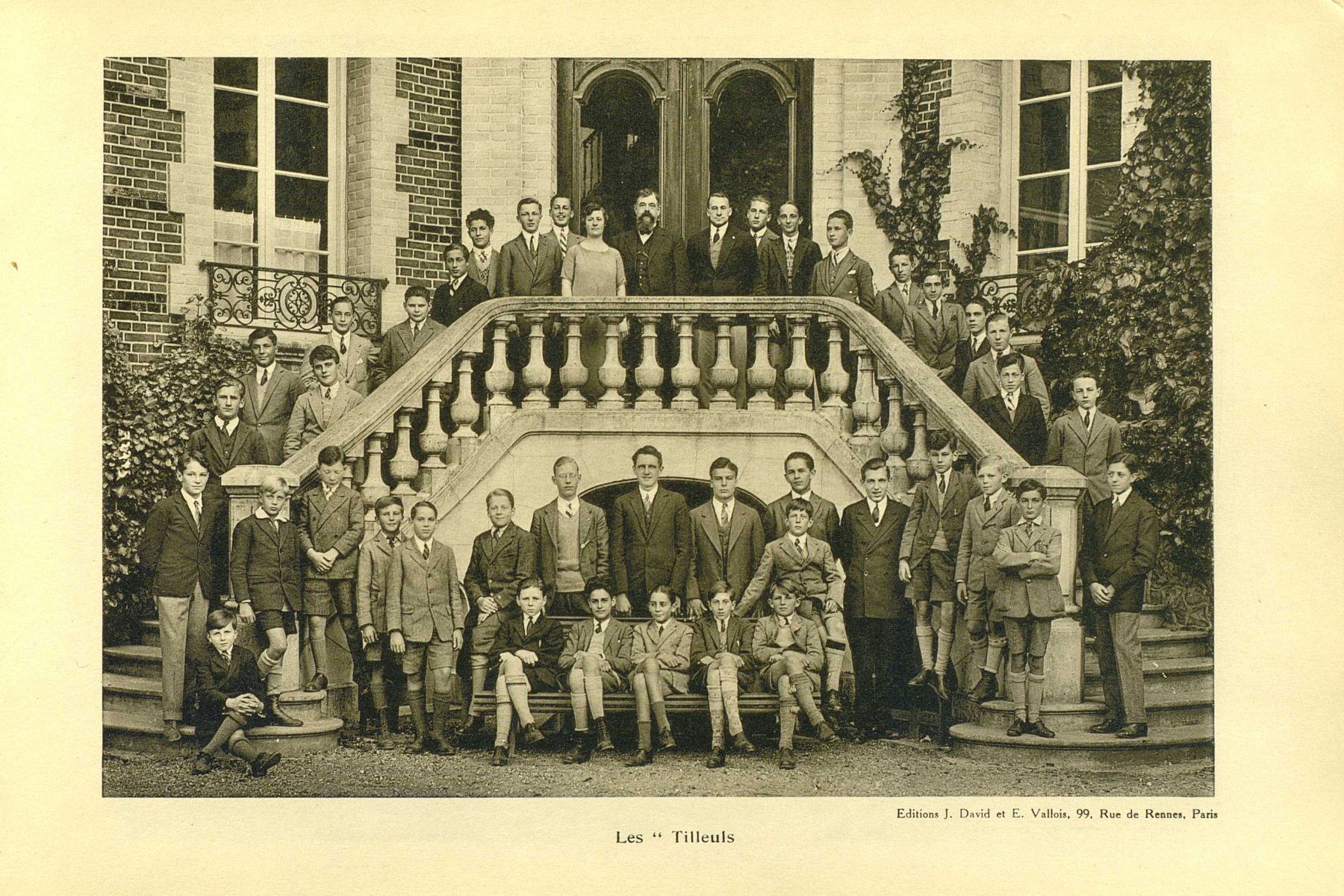
A public school in Mont-Cauvaire: photograph album
In the Collège de Normandie, modelled on Harrow school in England, physical education and games were compulsory. Pupils played football, real tennis and lacrosse, and did gymnastics and fencing.
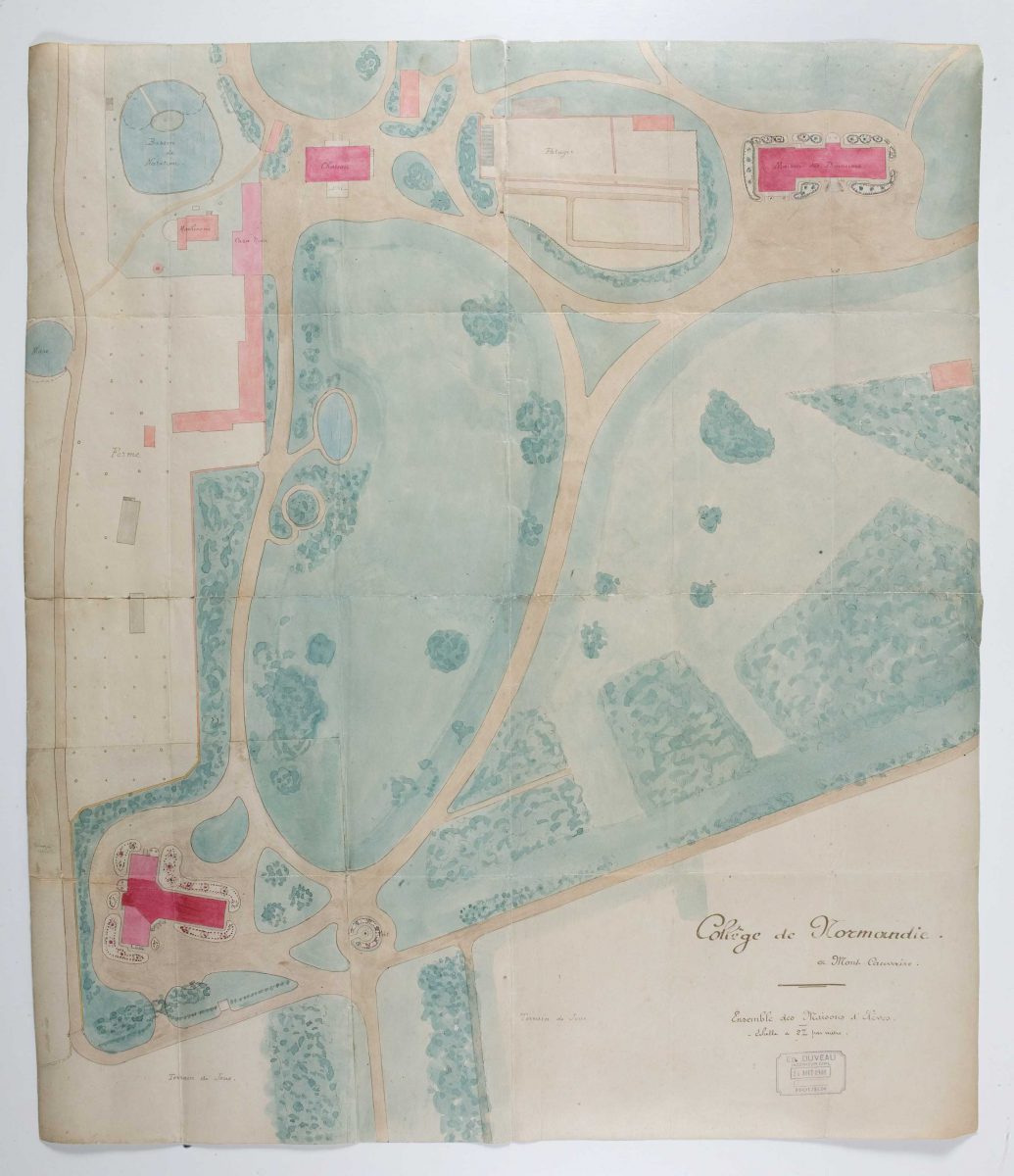
A public school in Mont-Cauvaire: plan of the pupils houses
The Collège de Normandie opened its doors in 1902. It was a private school for Catholic and Protestant pupils from the ages of 7 to 9 right through to the school-leaving examination. It was modelled on Harrow school in England. Modern languages were a prominent feature of the syllabus, and all pupils had to spend three months at a school in England.
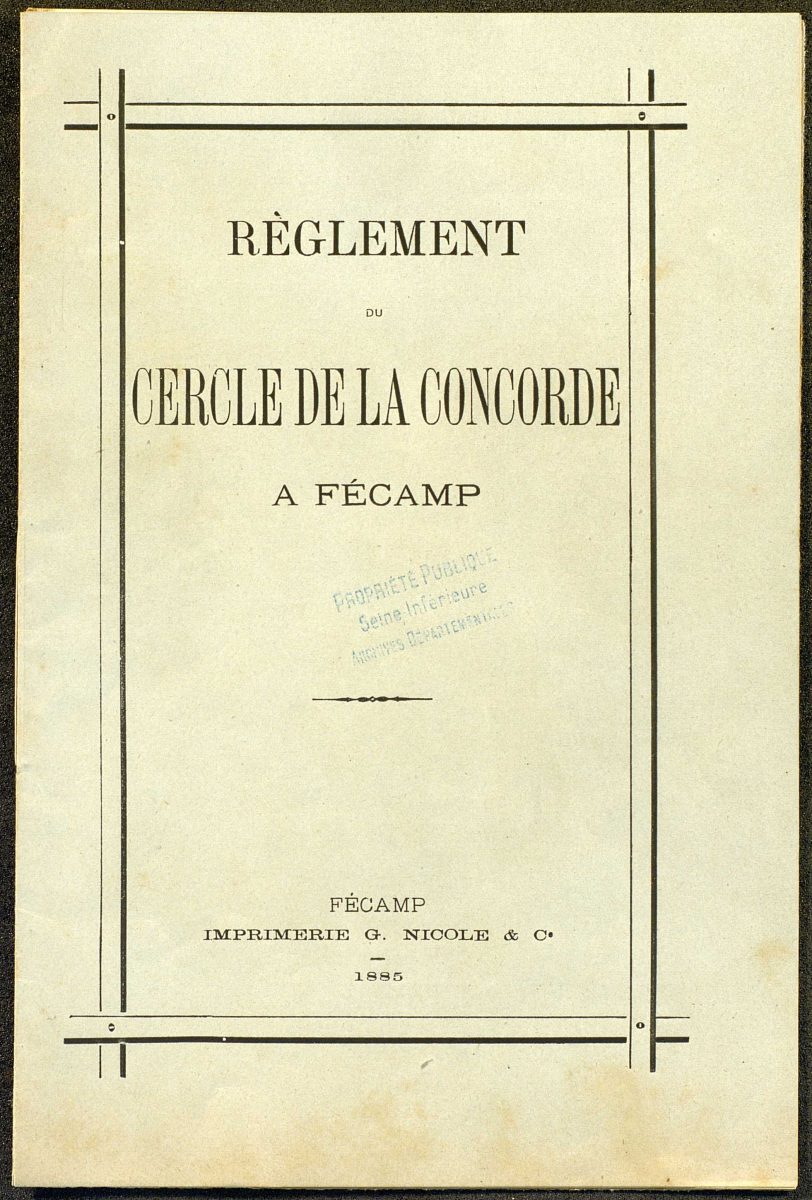
The fashion for English clubs: list of members of the Grand cercle du casino de Dieppe
Clubs became increasingly popular in Normandy, especially on the coast, in response to the English influence. The Cercle de la Concorde in Fécamp described its objective as offering residents somewhere “to talk about business and enjoy each other’s company”.
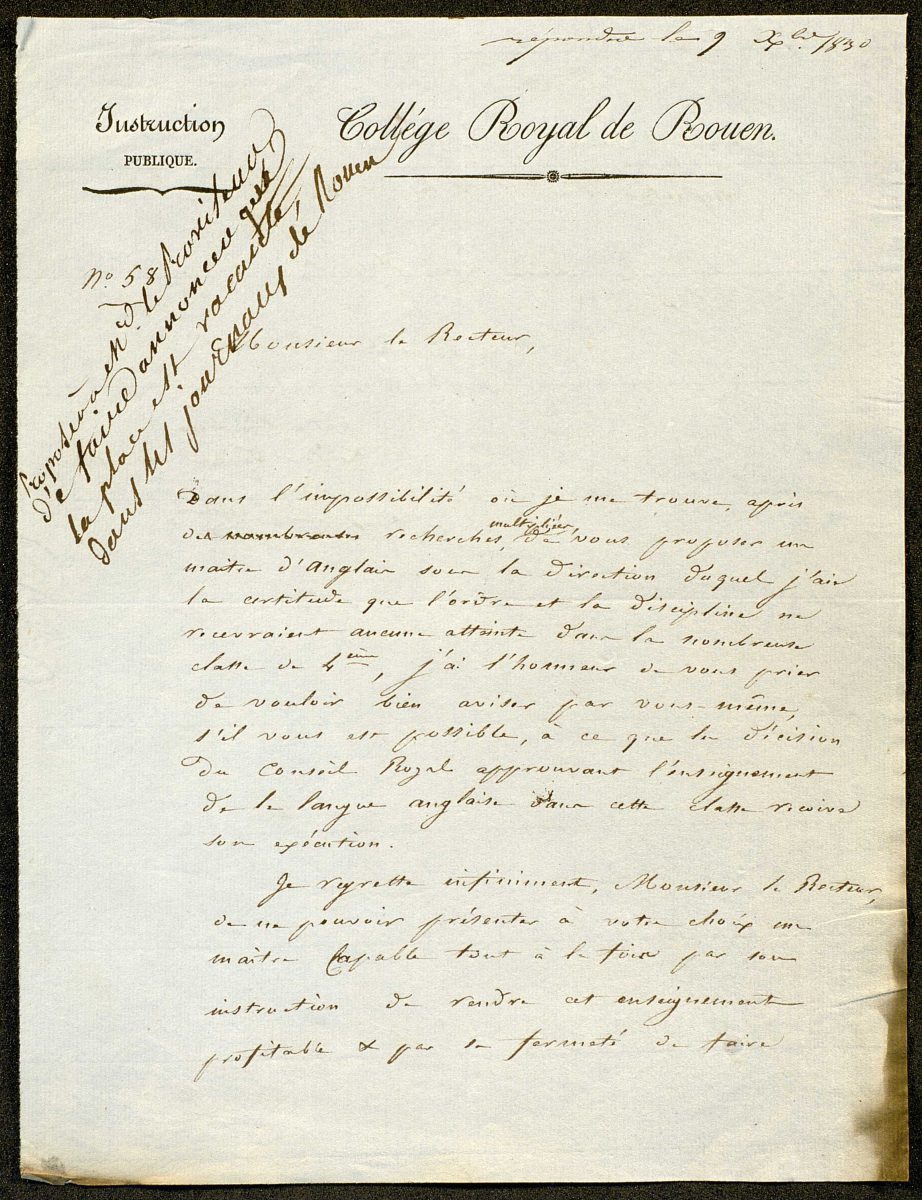
Seeking an English teacher: Letter from the Collège royal de Rouen to the rector of the Academy
Shortly after the Royal Council for Public Education had given its approval to the teaching of English, the Collège royal de Rouen, the forerunner to the Lycée Corneille, wrote to the rector complaining of difficulty in finding a qualified teacher.
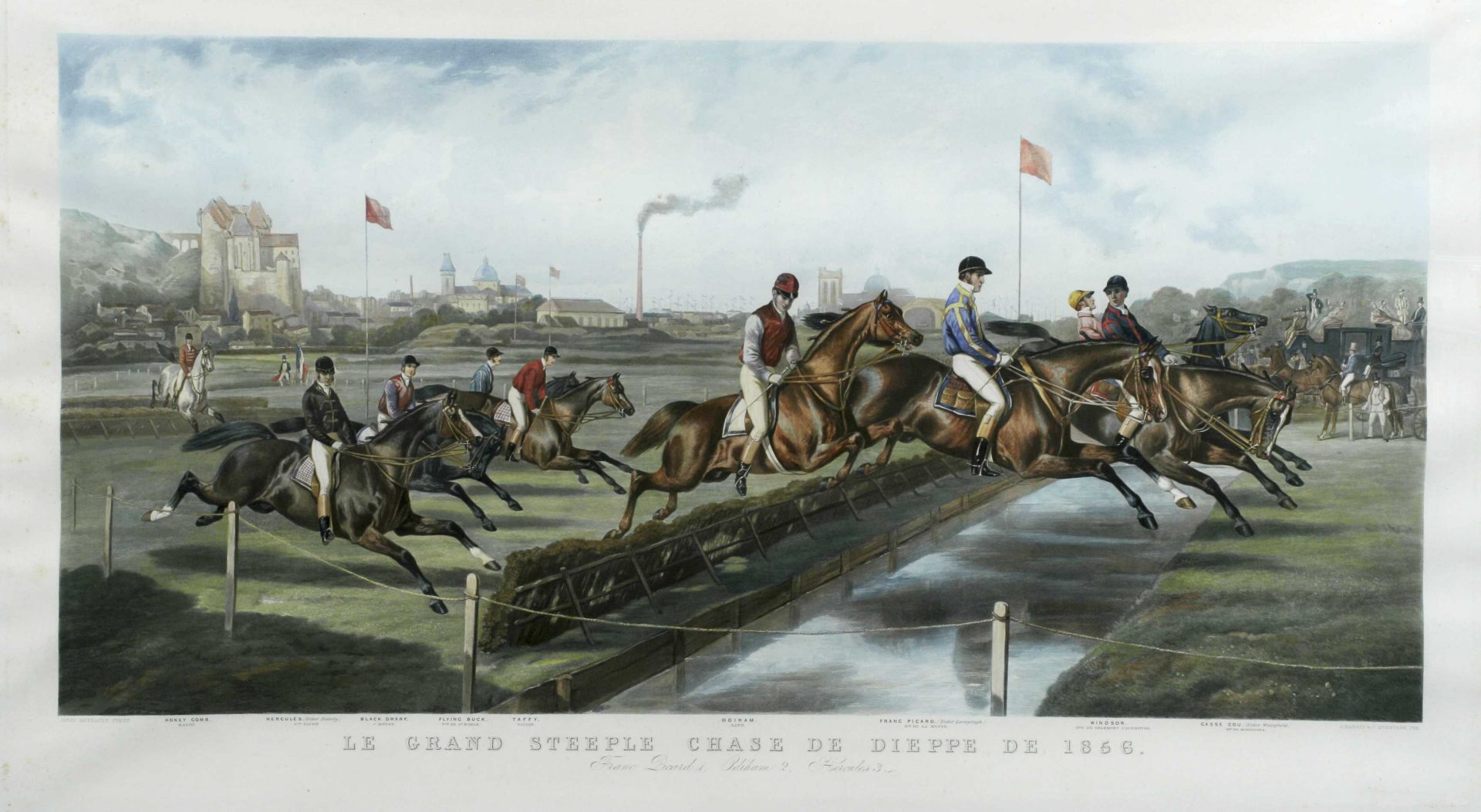
The grand Dieppe steeplechase by Louis Heyrault, lithography
Dieppe followed the English fashion for horse-racing, opening a racecourse as early as 1852 at which steeplechases were held. Followers of horse-racing were known as “sportsmen”, while the word “sport” was used in France only to describe horse-racing, as in the definition given in the 1883 edition of the Littré dictionary.
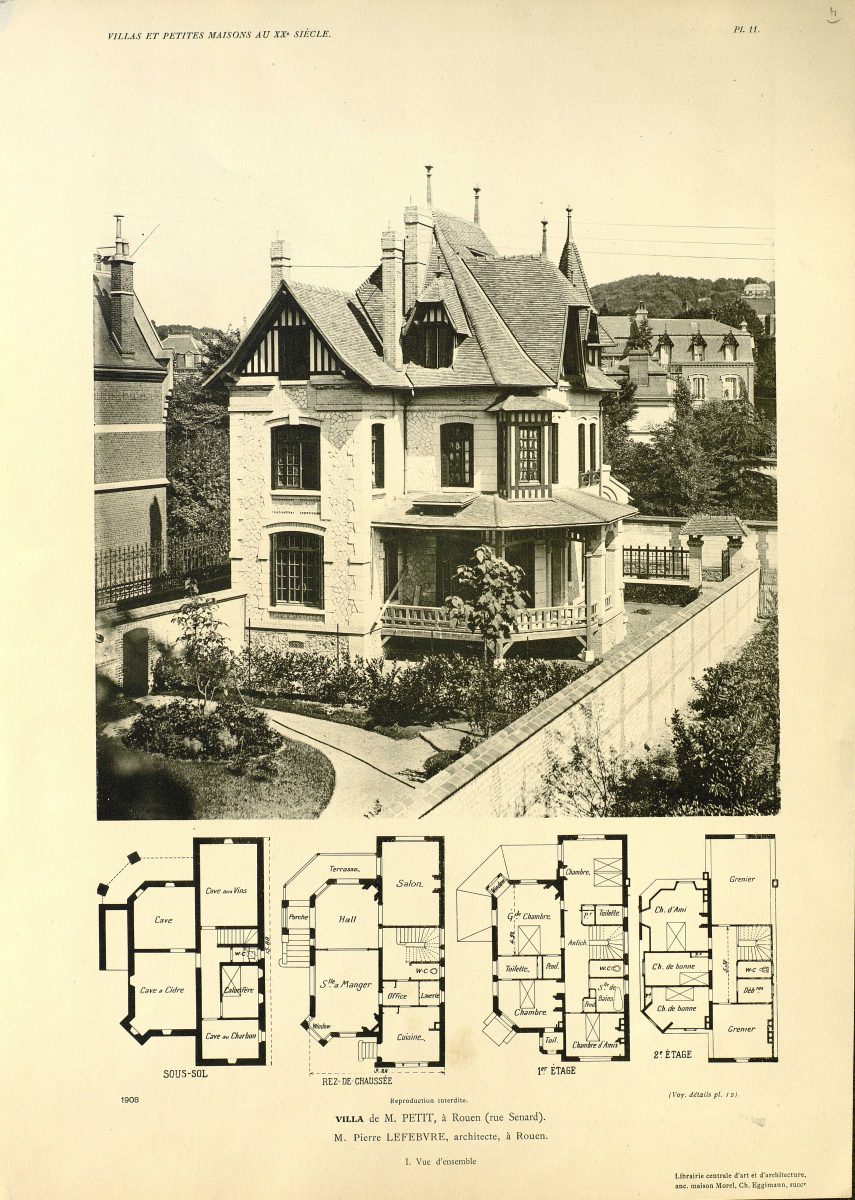
Rouen, villa in the rue Senard, architect P. Lefebvre. Printed plate taken from “Villas et petites maisons du XXe siècle”, Paris – Central Art and Architecture Library
This middle-class home shows how influential the regionalist trend was both in towns and at the seaside.
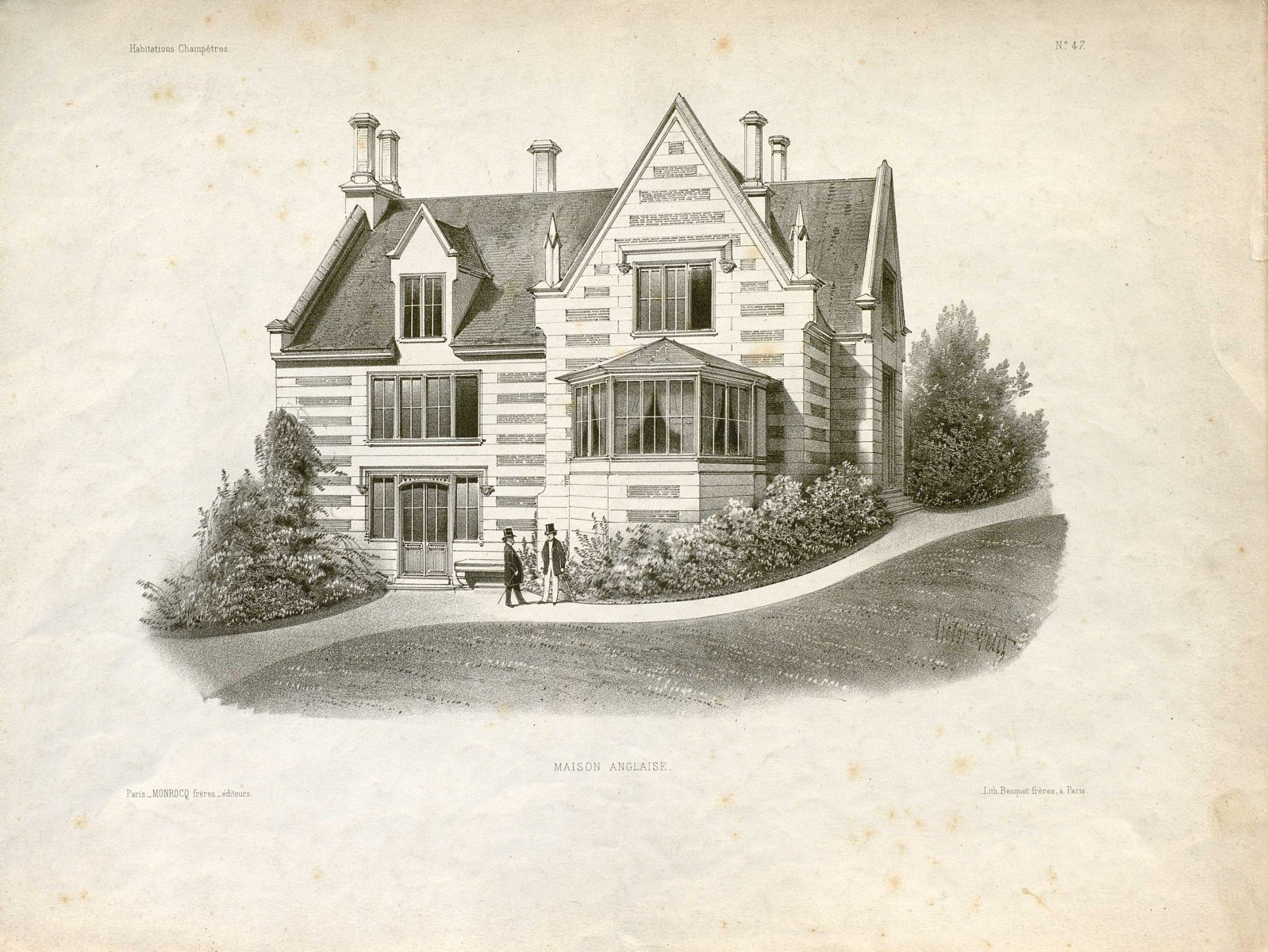
English house. Plate taken from “Habitations champêtres” by A. Petit
Books containing architectural plates became increasingly popular in the second half of the 19th century.
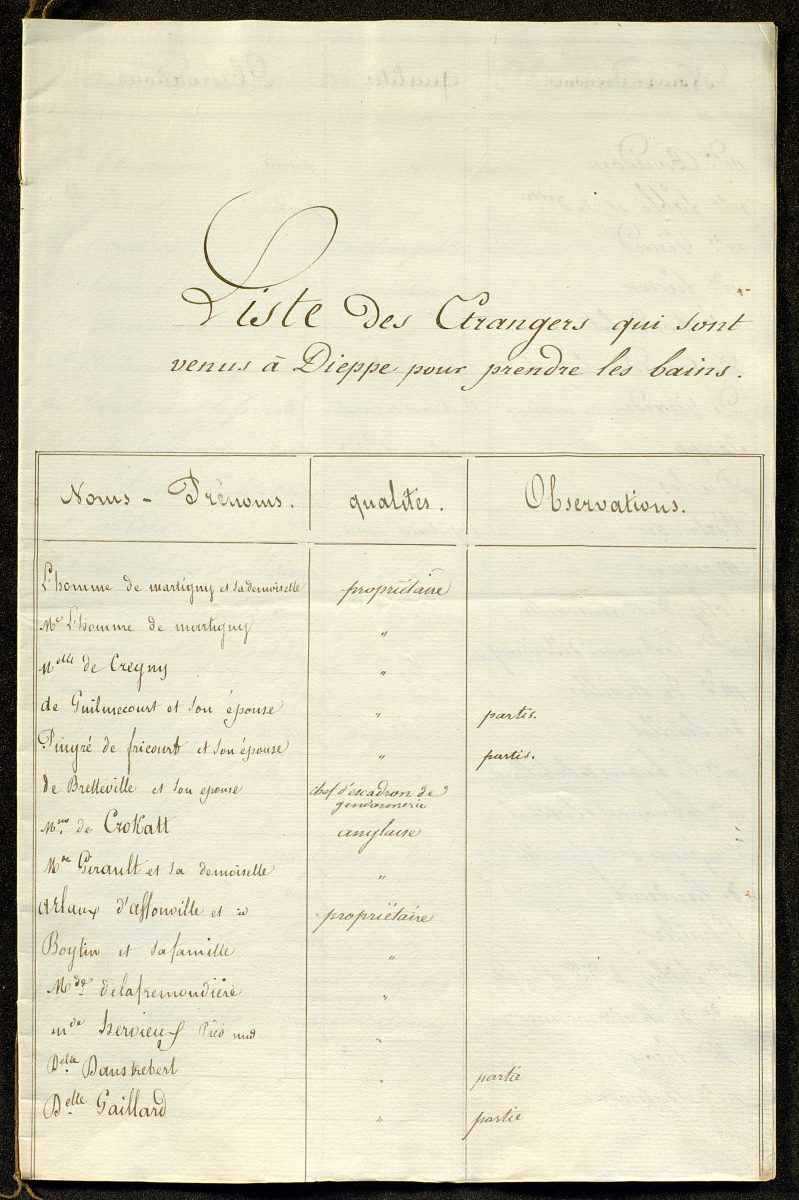
List of foreigners travelling to Dieppe for sea-bathing
Sea-bathing became fashionable in Normandy in the 19th century, following the trend set in England by Brighton.
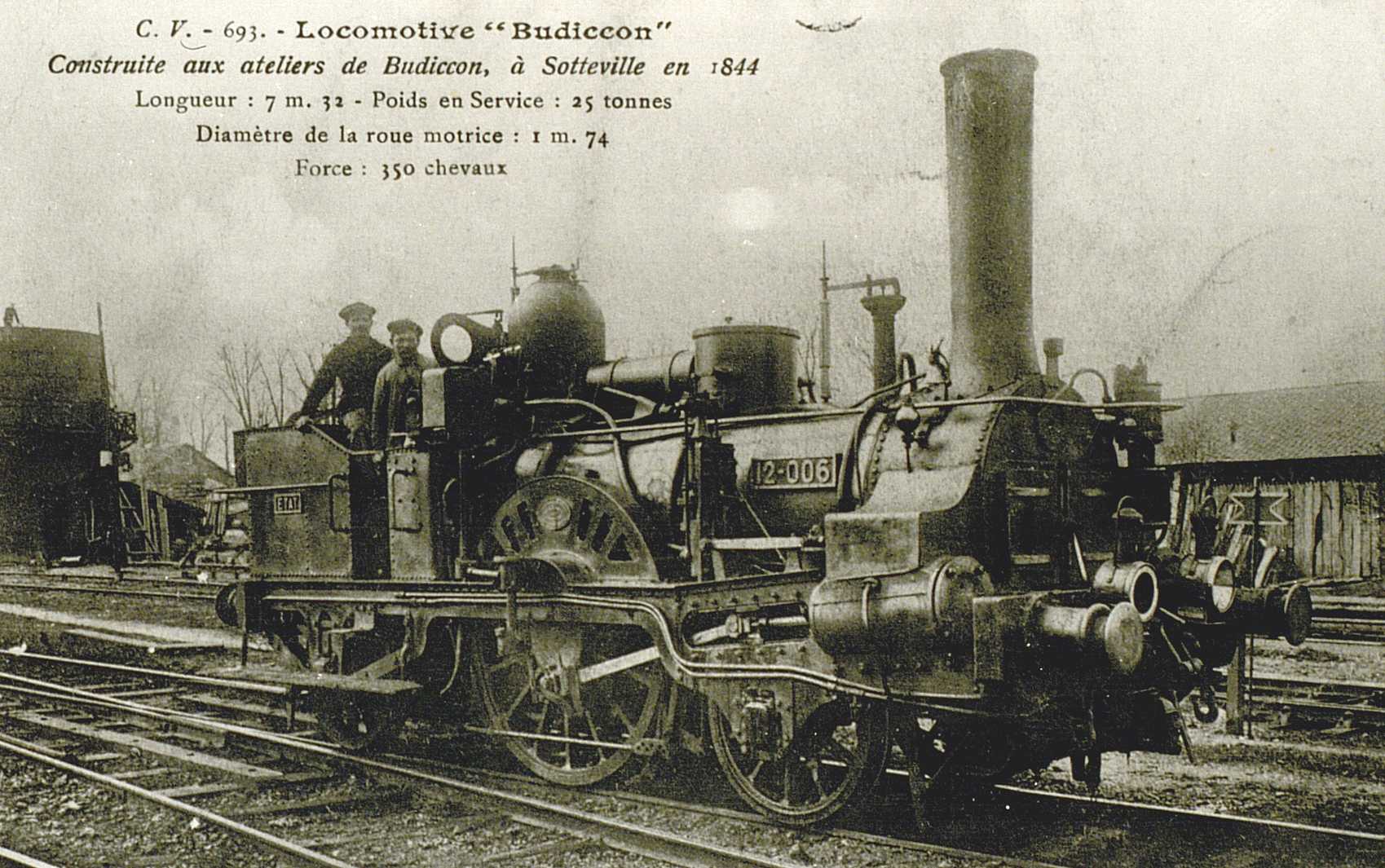
Budiccom locomotive
The Compagnie de Rouen had to be able to produce carriages and locomotives in order to be able to run the line. The backers of the proposed railway line between Paris and Rouen again turned to England, which already supplied many of the locomotives used in France.
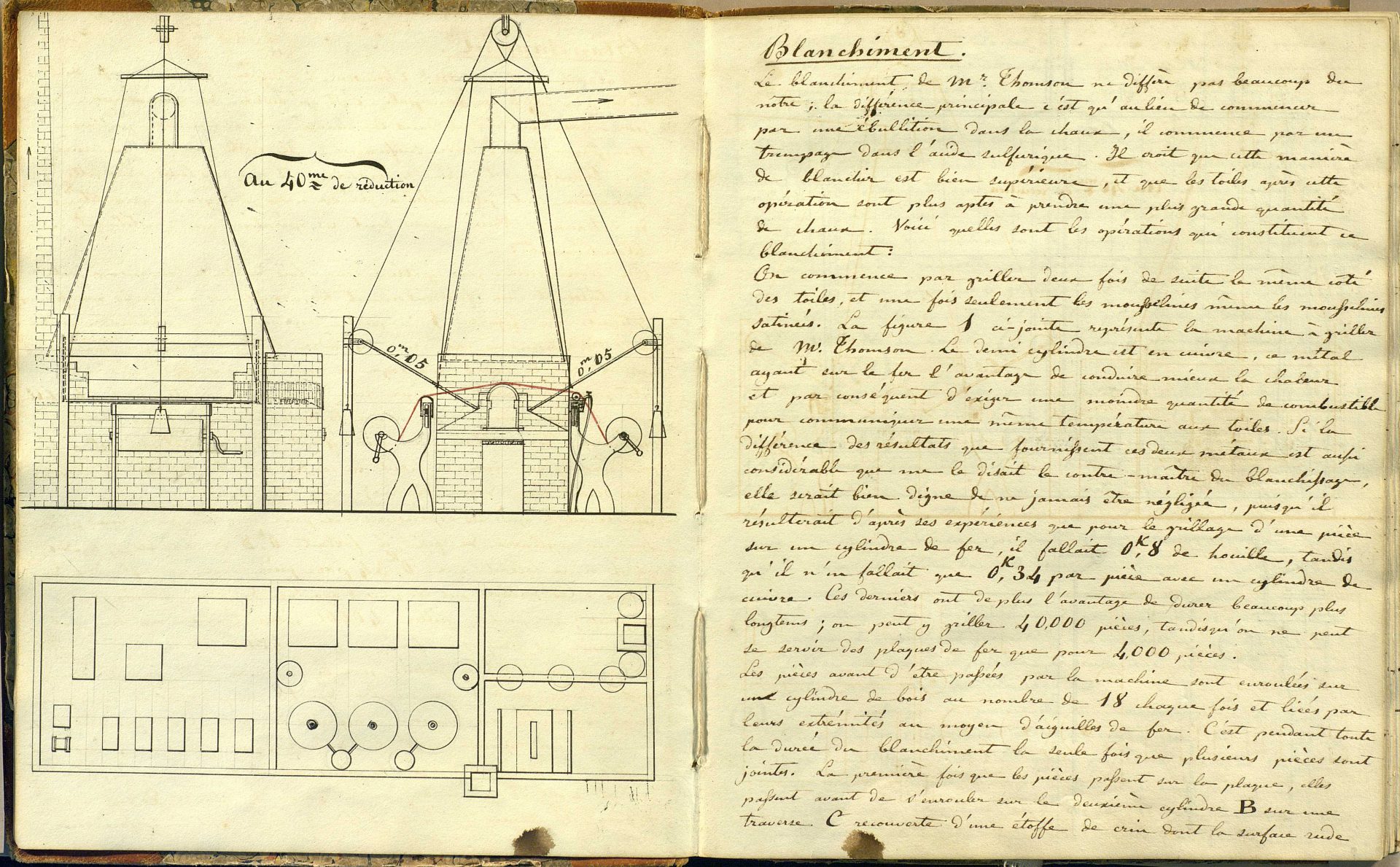
Journal of notes made in England by Camille Koechlin on the premises of Messrs. Thomson, Chippindall & Co. near Manchester
Camille Koechlin, a member of a textile-manufacturing family from Alsace, used this journal to record his observations on a trip to England during which he visited the premises of Thomson, Chippindall & Co. near Manchester.
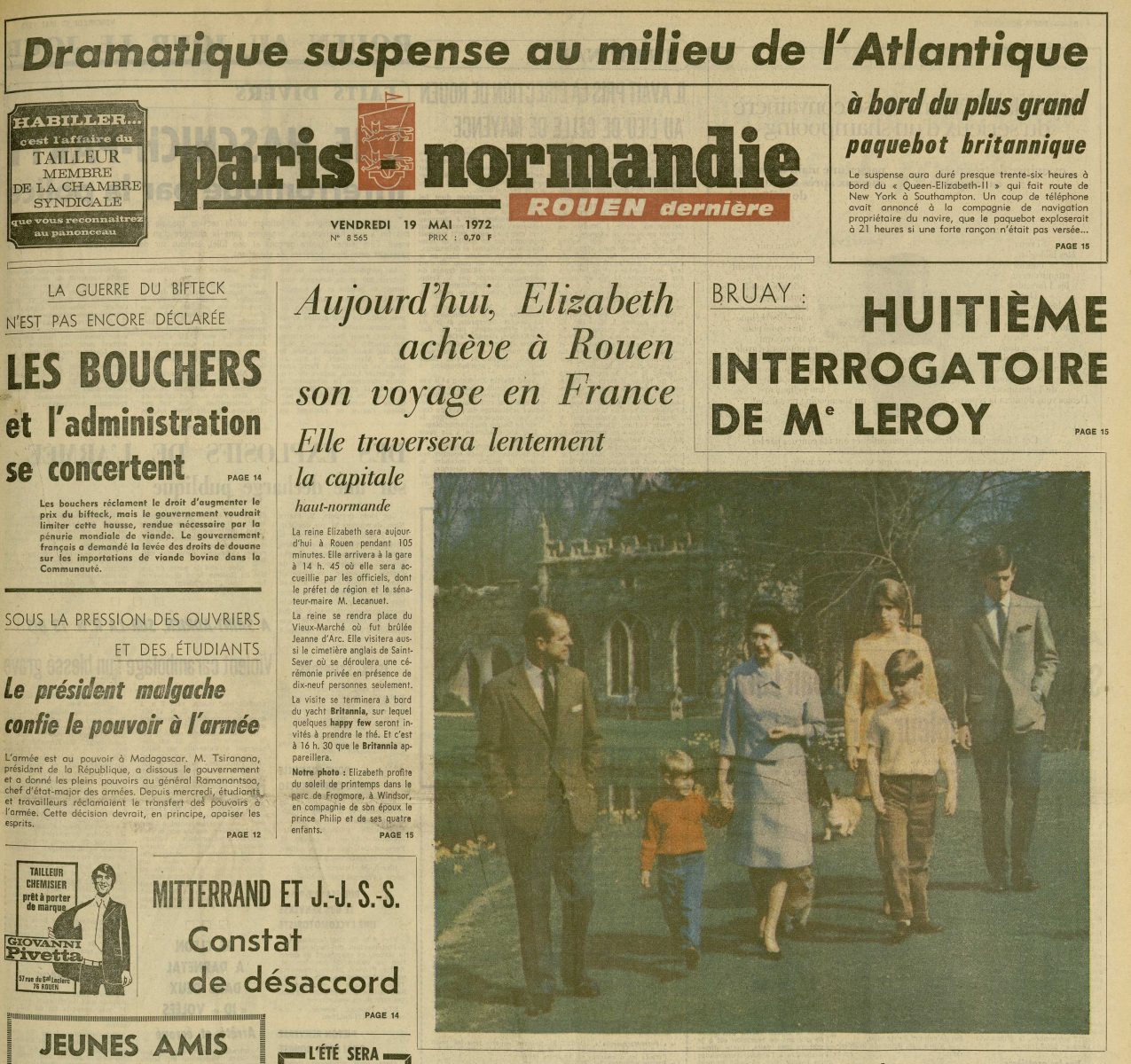
Visit by Queen Elizabeth II to Rouen
During the second state visit by Queen Elizabeth II to France, from 15 to 19 May 1972, the last event…
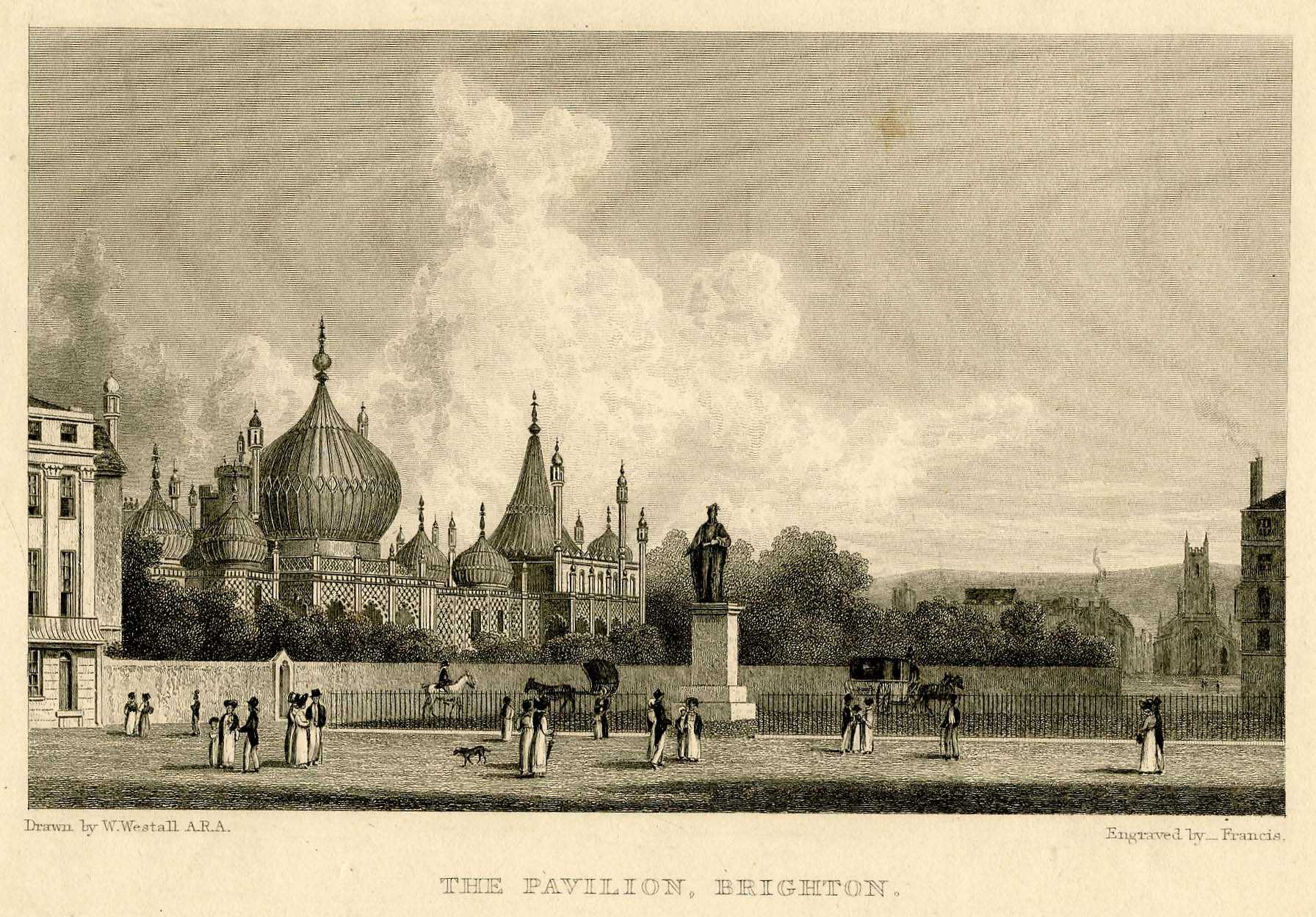
Printed copy of the designs for the Pavilion at Brighton by Humphrey Repton 1808
Printed copy of the designs for the Pavilion at Brighton by Humphrey Repton 1808. Humphrey Repton (1752-1818) was a consultant…
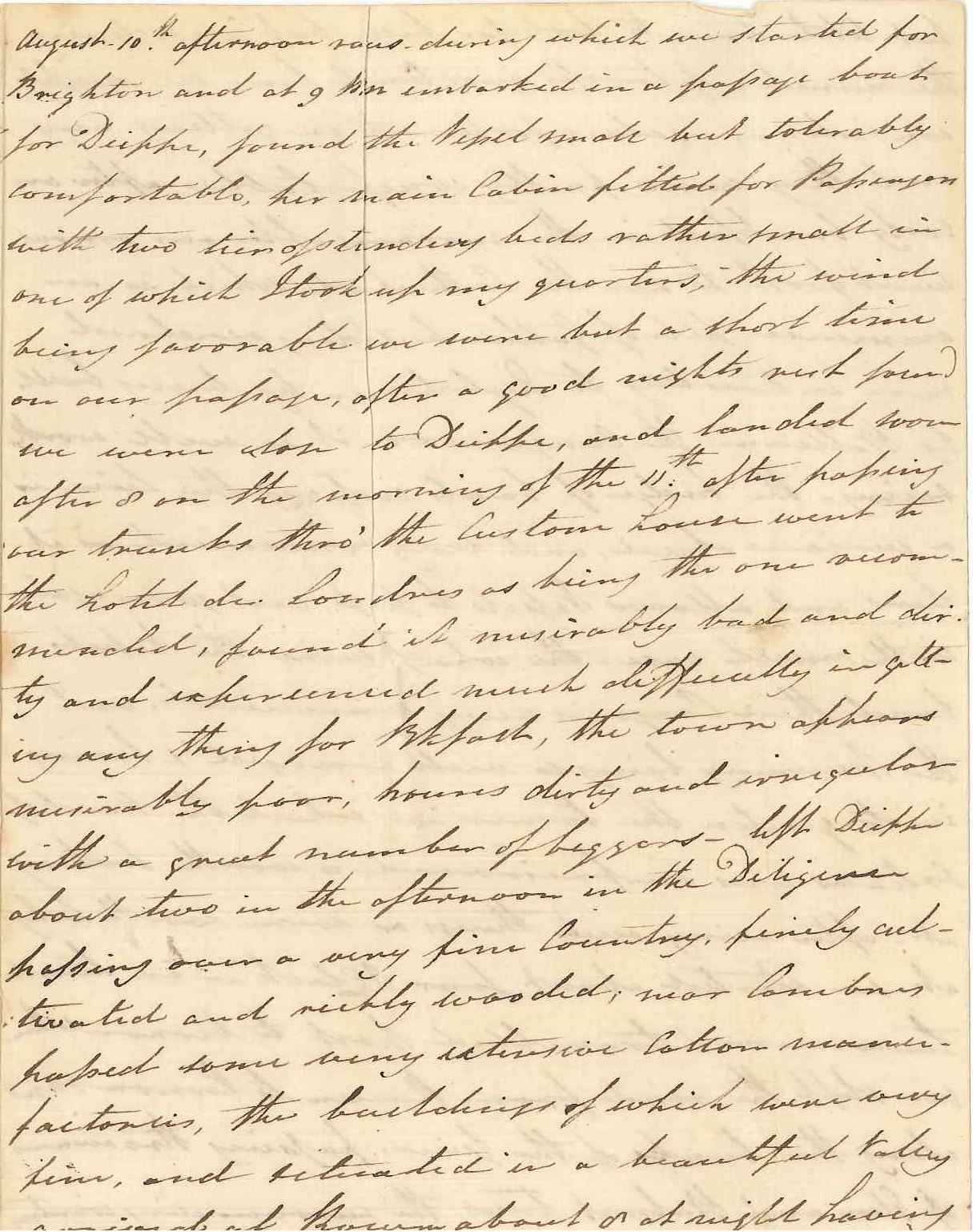
Account of a journey to Paris via Dieppe and Rouen by Henry Shiffner in 1815.
Account of a journey to Paris via Dieppe and Rouen by Henry Shiffner in 1815. Henry Shiffner (1789-1759) was…
